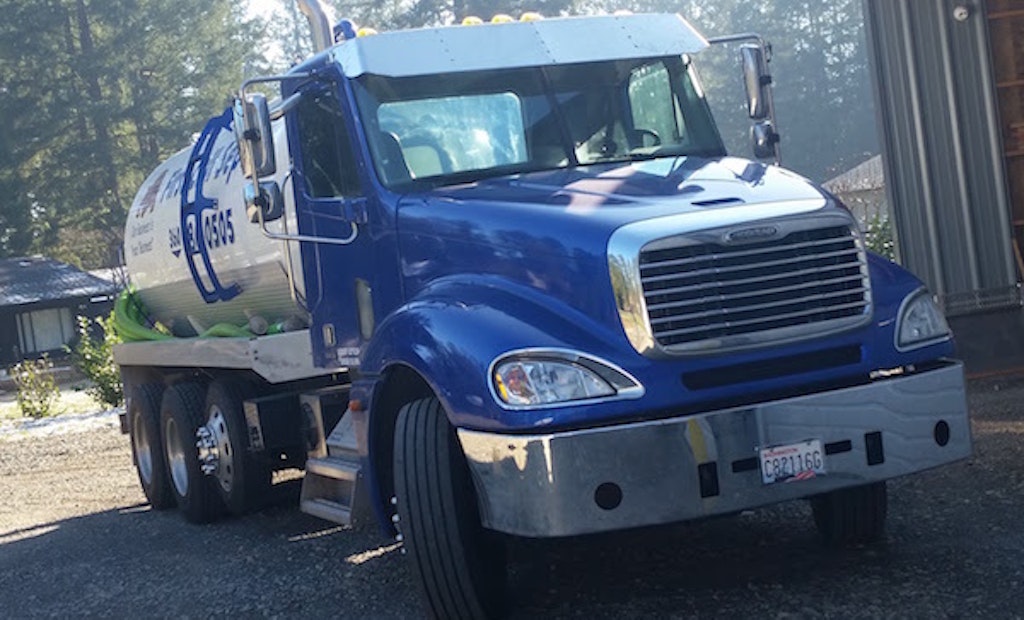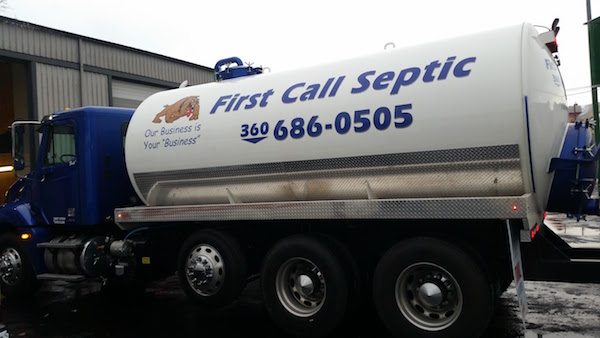
Interested in Trucks?
Get Trucks articles, news and videos right in your inbox! Sign up now.
Trucks + Get AlertsRonnie Tamez, owner of First Call Septic Services, knows a thing or two about getting what he wants out of used trucks. When he sees the right deal, he’ll go to great lengths to secure it — even if that “great length” is the 3,200-mile drive from Miami to his hometown of Battle Ground, Washington.
He’s the first to admit that the used market isn’t always a straightforward deal, but with a little planning and research, it’s a great way to continue running a business on a budget.
Tamez purchased the auto-shift Freightliner pumper truck from National Truck Center. He’d purchased a couple used trucks in the past, and for his third one he researched National Truck Center and hired someone to inspect it before he and his wife, Jennifer, flew to Miami to pick it up and begin the long drive home.
“I’ve learned a lot from my other purchases, mainly that the pumper trucks are being sold for a reason,” Tamez says. “People don’t usually sell a good vehicle. With National Truck Center, they built me a fully engineered tank on site, so while the truck had 300,000 miles on it, the rest was just about new.”
Tamez carefully planned for his trip. After talking to the Department of Transportation (DOT), he found out that if his wife came with him, rather than an employee, they wouldn’t have to follow the standard DOT rules regarding how long a driver can be behind the wheel before a mandatory break. In addition, by putting a sign on the truck saying “not for hire,” he could avoid most of the inspections pumper trucks receive while traveling.
“Fellow pumpers told me I would get into all kinds of trouble doing this, but I’ve done this before and did my research,” he says. “I had to stop at the weigh stations of course, but there were no inspections.”
Tamez also carefully plotted out a route with hotels that would allow him to park the pumper truck overnight.
“The hotels were good,” he says. “I wanted to make sure they had enough room and that they understood the pumper was empty. We had five days to make the trip so we kept moving along.”
The trip wasn’t entirely smooth. Only 8 miles into the journey, a valve failed on the truck.
“As luck would have it, we were in the parking lot of a Sears,” says Tamez. “An Uber ride to Freightliner and a new air brake dryer later, we were back on the road four hours later. It was one of those things that could have happened at any time, anywhere. No one could have predicted it. Fortunately, we were close by and got it fixed so we could get back out on the road and get going.”

Once he got the truck home, Tamez replaced the brakes and adorned the tank with his First Call Septic logo.
When looking to buy a used truck, Tamez shared the following insights:
Do your research — Look at the company or entity selling the vehicle and learn why they are looking to sell. Also, what kind of track record do they have?
Nothing is turnkey — Some sellers advertise their trucks as “turnkey” and ready to get right to work. Tamez says that’s unlikely, since most used pumper trucks need customization work for their new owners, even if it’s just new stickers advertising the business. With his latest purchase, Tamez not only put the company’s name on the truck, he also updated the brakes. “I bought a used truck. I knew it wouldn’t be perfect,” Tamez says.
Calculating usage and value — Although his new vehicle had 300,000 miles on it and he drove it cross-country, Tamez says he’s not worried about the high mileage since his vehicles average 30,000 miles annually. Think about how many years you’d like to get out of a truck and decide if it’s worth the asking price.
Do you need a tank upgrade? — How big of a tank do you need? If the tank size is a little larger, will employees be able to do two jobs before coming back to the shop, allowing workers to be more productive?
Don’t overlook your own comfort — His new truck has air ride suspension, which made the cross-country trip comfortable. But Tamez’ previous truck was exhausting to drive. “Get in the truck and see how it feels,” he says. “If it’s not very comfortable and you’re going to be driving all day, that’s not the way to go. You’re going to really regret it.”
Although Tamez returned with his truck not too long ago, he already knows what his plans are for his next one. “I am going to find the truck rig that I want and then take it to National Truck Center and have them add the pumper right on it,” he says. “That way, I will get exactly what I want.”





